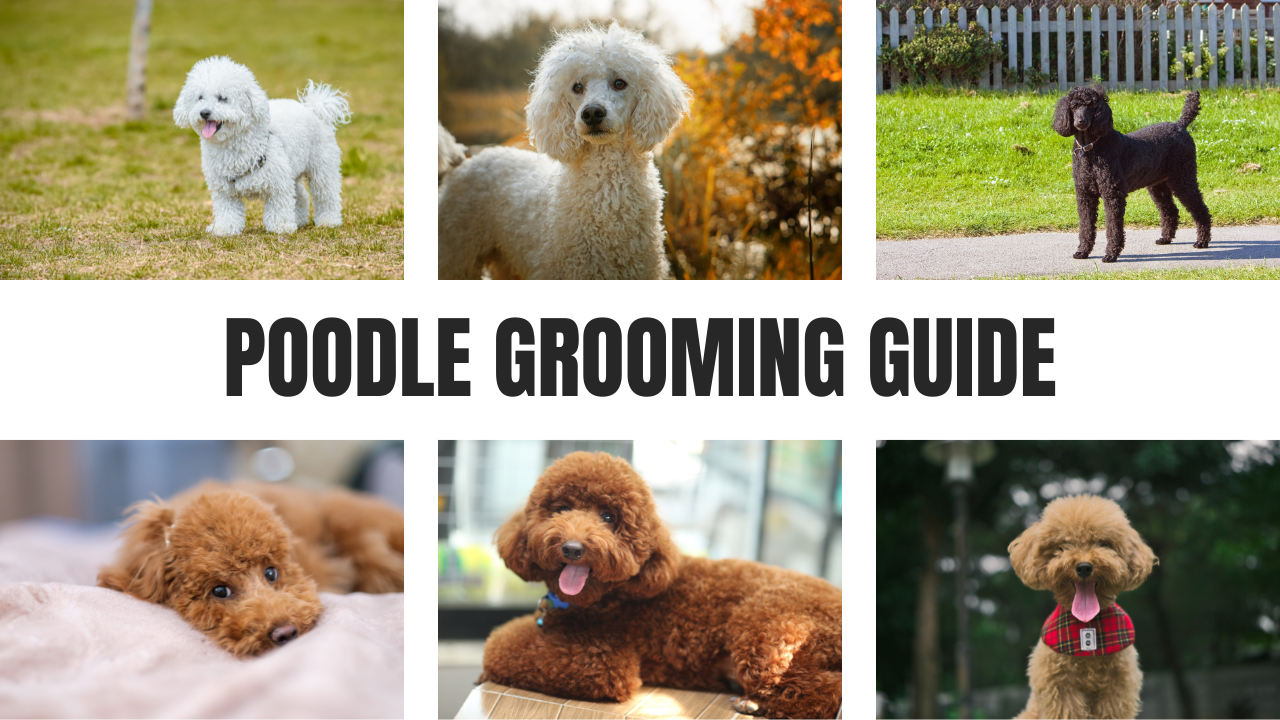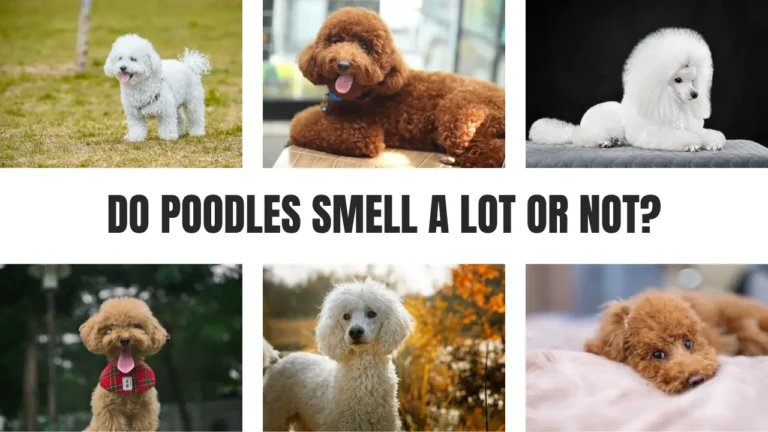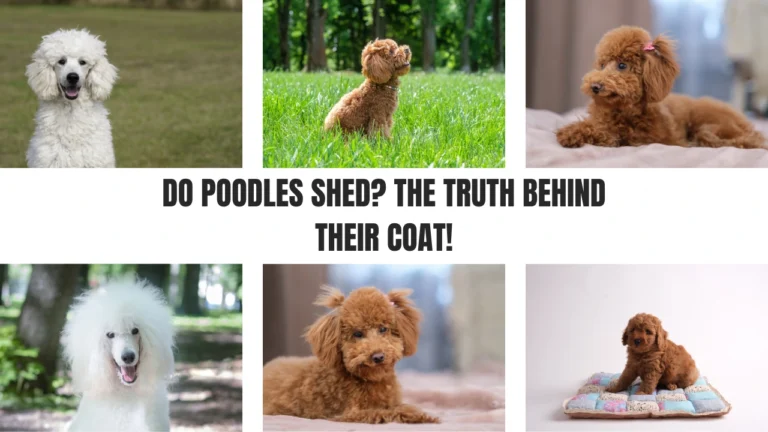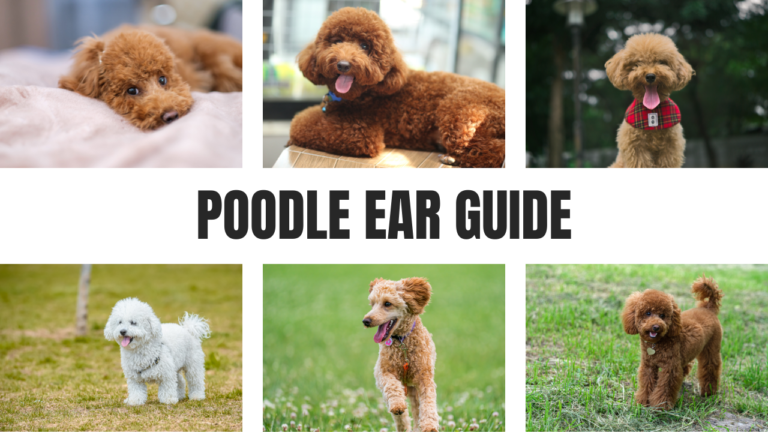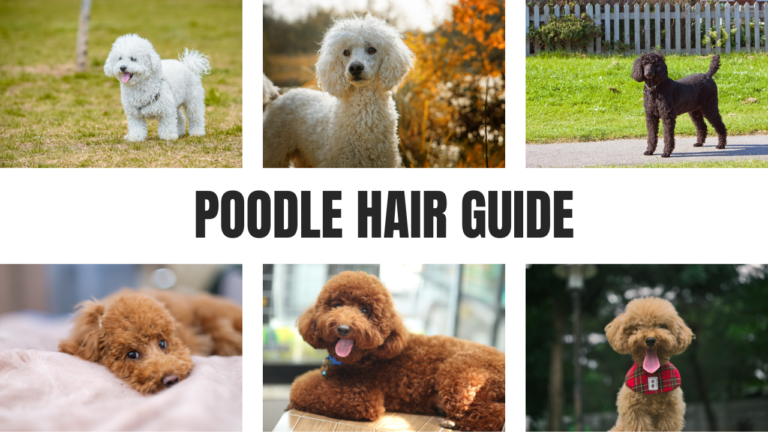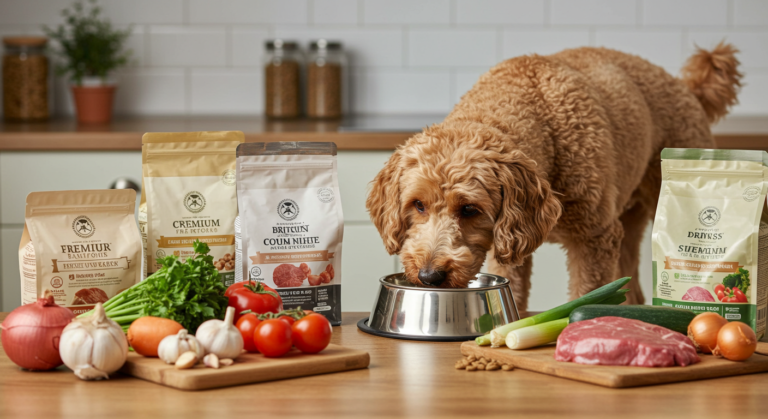The Comprehensive Poodle Grooming Guide You Need
Grooming a poodle requires careful attention and a consistent routine to maintain their unique coat and overall health.
Regular grooming includes brushing, bathing, trimming, and nail care, which ensures the poodle remains clean and comfortable.
Poodle grooming not only enhances their appearance but also prevents matting and skin issues.
Understanding Poodle Fur
Poodle fur is unique compared to other dog breeds, characterized by its curly texture and specific grooming needs.
Proper care of this type of fur is crucial to maintain the dog’s health and appearance. Poodles have a distinctive coat that is curly and dense.
This fur type is known for its ability not to shed much, making it a preferred choice for those with allergies.
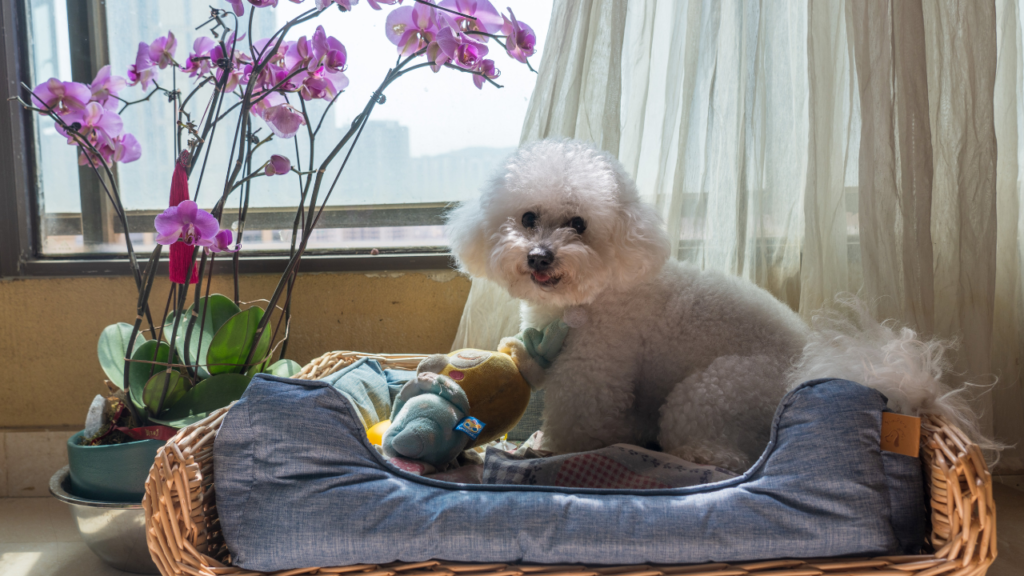
Their coat has a unique structure that provides insulation, which helps regulate the dog’s body temperature.
The curls help in trapping air and maintaining warmth during colder weather. Due to the density and curl, the fur can also become matted if not groomed regularly.
Poodle fur requires regular grooming to prevent matting and maintain skin health.
Brushing the coat frequently and professional grooming every 4-6 weeks helps manage this. Neglecting this can lead to skin issues and discomfort for the dog.
Read More = Tips For Traveling With Pets
The Significance of Proper Grooming
Proper grooming for poodles goes beyond aesthetics. Regular grooming helps in maintaining the health of their skin and fur.
It prevents matting, which can lead to skin infections and discomfort. Grooming also allows for better inspection of parasites like fleas and ticks.

Bathing poodles with appropriate dog shampoo and conditioner is essential. Over-bathing can strip natural oils from their skin, leading to dryness.
Clipping their nails and cleaning their ears are also parts of a comprehensive grooming routine.
Maintaining a grooming schedule helps in keeping the coat manageable and reduces the risk of health issues.
Professional grooming services are recommended for detailed grooming tasks, ensuring the poodle’s fur remains in prime condition.
Getting Started With Poodle Grooming Guide
Grooming your poodle at home requires proper tools and knowledge. Consider the benefits and challenges of at-home grooming versus professional services.
Having the right tools is crucial. Clippers are essential for trimming fur. Choose clippers designed for poodles’ curly coats.
Scissors are needed to refine the cut and reach tricky areas. A slicker brush helps remove tangles and mats.
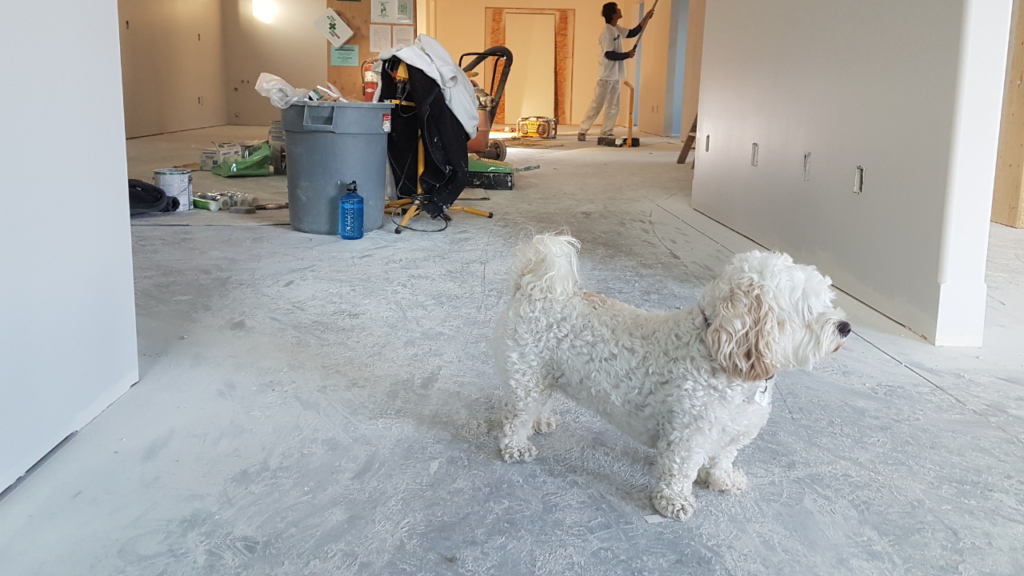
A comb is also necessary for finishing touches. Use a quality shampoo and conditioner to keep the coat healthy.
Don’t forget a towel and blower for drying after a bath. Regular grooming ensures a clean and healthy coat.
Grooming at home offers convenience and cost savings. It allows owners to bond with their pets.
However, it requires investment in tools such as clippers, brushes, and grooming tables. Beginners might find the learning curve steep.
Professional grooming services provide expertise and precision. Groomers have specialized tools and knowledge to handle various coat types.
This option is beneficial for those who prefer not to invest in grooming equipment. Regular visits maintain a polished look.
Read More = Best Dog Breeds For Familes
Pre – Grooming Procedures
Brushing Your Poodle’s Coat
Poodles have a dense, curly coat that requires frequent brushing to prevent tangling and matting.
Brushing your poodle regularly is one of the most important aspects of grooming. A slicker brush and a comb are essential tools to use during this process.
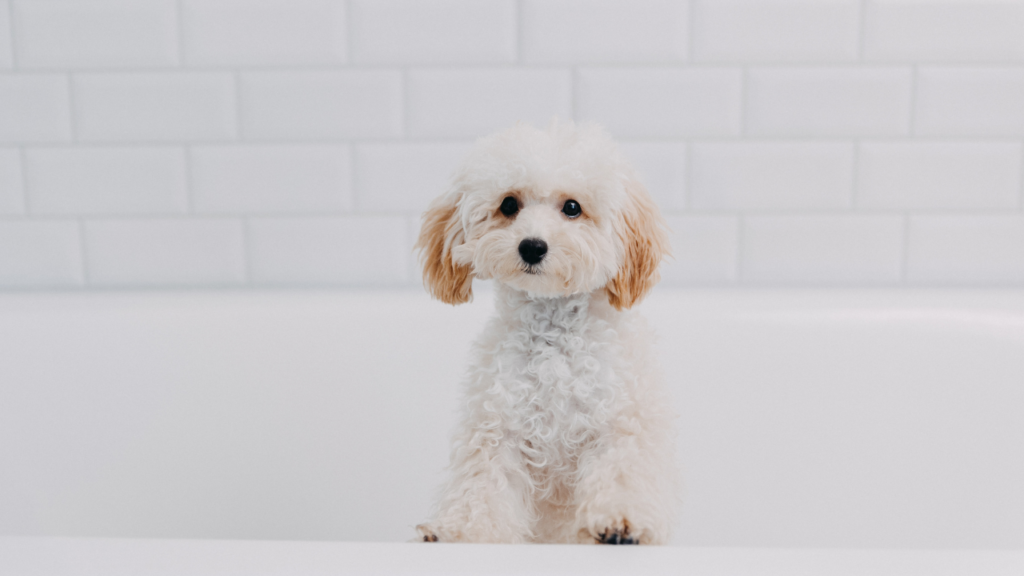
You should brush your poodle’s coat daily, paying particular attention to areas where mats tend to form, such as behind the ears, under the legs, and around the collar.
Always start at the tips of the fur and work your way toward the roots to avoid pulling on their hair.
If you encounter any mats, use a comb to gently separate them, starting from the tips and working your way toward the base of the tangles.
Bathing Your Poodle
Poodles have sensitive skin, so it’s important to use a gentle dog shampoo that will clean their coat without stripping away the natural oils that keep their skin and fur healthy.
You should bathe your poodle every 3-4 weeks, depending on how active they are and how dirty they get.
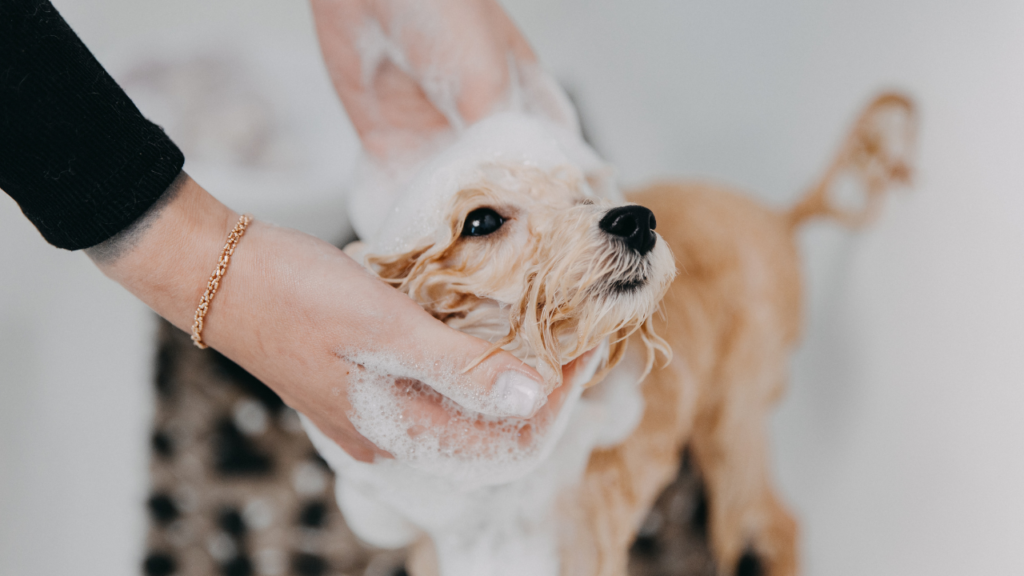
Overbathing can lead to dry skin, so it’s essential to find a balance. When bathing your poodle, ensure the water is lukewarm, and rinse thoroughly to remove all shampoo.
After the bath, gently towel dry your poodle, and if necessary, use a blow dryer on a low heat setting to help dry their coat.
Trimming Your Poodle’s Coat
Poodles’ coats grow continuously and require regular trimming to maintain their distinctive look.
You can choose from various grooming styles, such as the classic “puppy cut” or the “lamb cut,” but regardless of the style, you’ll need to trim your poodle’s fur regularly to keep it neat.
You can either visit a professional groomer for this task or learn to trim your poodle at home.
Regular trimming helps prevent mats and keeps your poodle’s coat healthy and manageable.
Nail Trimming
Poodles’ nails can grow quickly, so regular nail trimming is essential for their comfort and health. Overgrown nails can lead to discomfort or even cause injuries if they break.
Use a dog nail trimmer or grinder to carefully trim the nails, being cautious not to cut too close to the quick (the sensitive area inside the nail). If you’re unsure, a groomer can help show you the proper technique.
Read More = List Of Pet Friendly Vacation Spots
Ear Care for Poodles
Poodles are prone to ear infections due to their floppy ears and dense fur. To prevent infections, you should clean your poodle’s ears regularly.
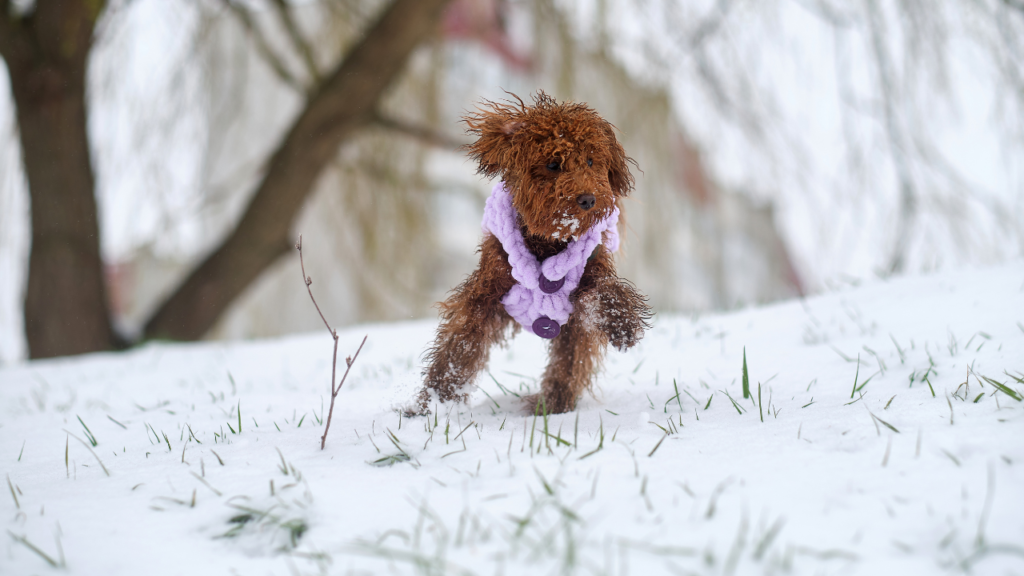
Use a vet-approved ear cleaner to gently wipe the inside of the ear flaps, making sure to remove any wax buildup or dirt.
Be careful not to insert anything into the ear canal, as this could cause injury. Regular ear cleaning can help prevent infections and maintain overall ear health.
Teeth Brushing for Poodles
Dental health is just as important for poodles as it is for humans. Regular brushing helps prevent plaque buildup and tooth decay.
You should brush your poodle’s teeth several times a week with a toothbrush designed for dogs and a toothpaste that’s safe for canine use.
Regular dental care can also help prevent bad breath and maintain your poodle’s overall health.
Grooming Your Poodle’s Eyes
Poodles are known to have long, curly fur that can sometimes cause their eye area to become irritated.
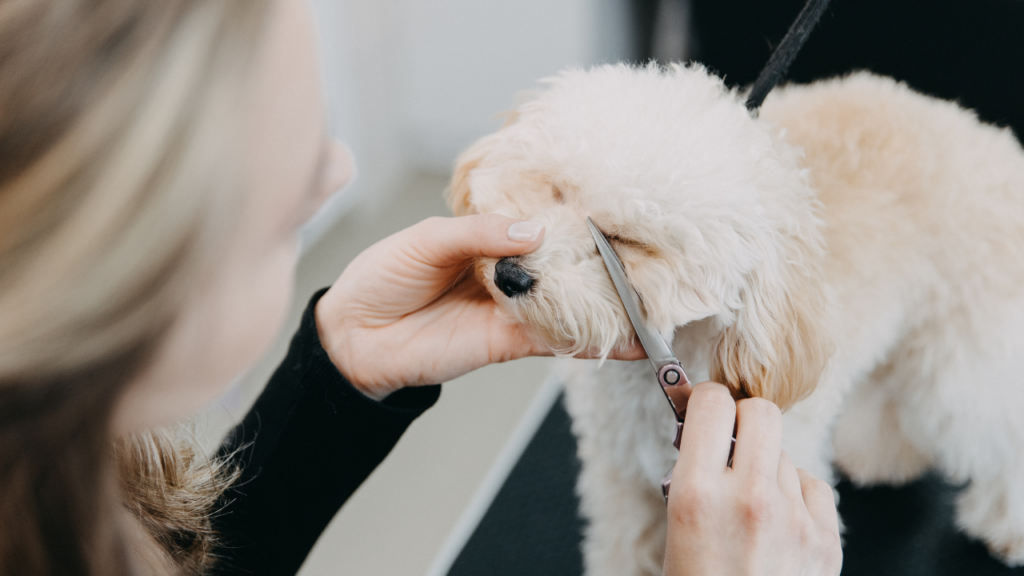
To keep their eyes clear and free from discharge, gently wipe around their eyes with a damp cloth or eye wipes designed for dogs.
Regular eye cleaning can help prevent staining and discomfort, especially in poodles with light-colored coats.
Grooming Frequency
To keep your poodle looking its best, regular grooming is essential. Brushing should be done daily to prevent mats and tangles.
Bathing is recommended every 3-4 weeks, while nail trimming, ear cleaning, and dental care should be performed regularly as needed.
If you’re unsure how often to groom your poodle, consulting a professional groomer can help establish the right routine for your dog’s needs.
Haircut Styles and Techniques
Poodle grooming requires attention to detail and knowledge of various haircut styles. There are several popular poodle haircuts, each suited for different occasions and preferences.
The Teddy Bear Cut gives a round, fluffy appearance, ideal for those who want a cuddly look.
The Lamb Cut leaves the body hair short with a bit more length on the legs, suitable for warmer climates.

The Continental and English Saddle Cuts are common for show poodles, featuring shaved feet, face, and tail with pom-poms on the hips.
The Bikini Cut is minimalistic, leaving short hair all over the body, perfect for easy maintenance.
The Kennel Cut provides an even shorter body with slightly longer hair on the head, feet, and tail, ensuring easy grooming and comfort.
To achieve these popular styles, follow these basic trimming steps. First, gather scissors, clippers, and grooming tools.
Wash and dry the poodle’s coat thoroughly, ensuring it is completely dry before beginning any trimming.
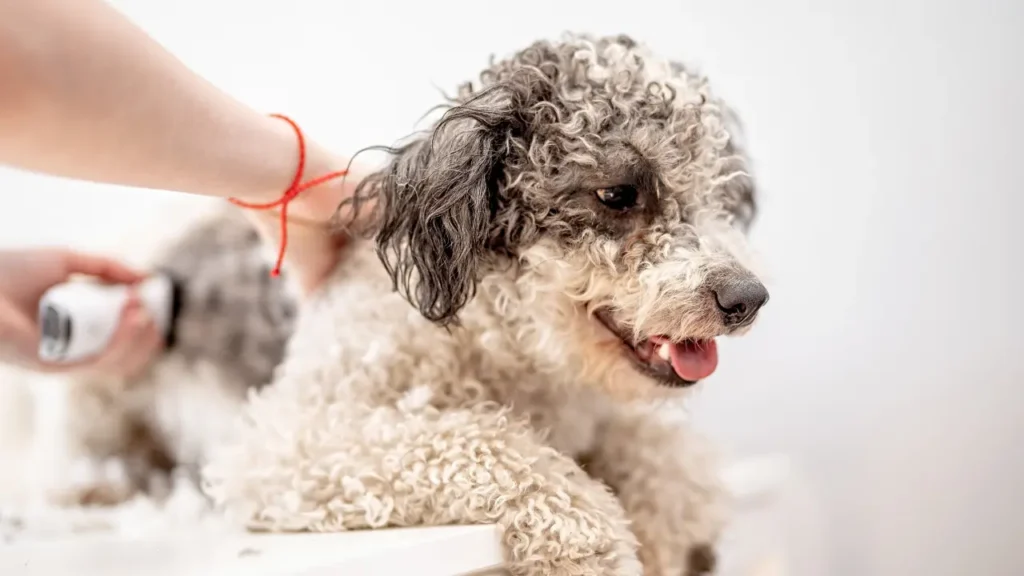
Trim the body using clippers to achieve the desired length, depending on the haircut style.
Detail the pet’s feet, face, and tail using scissors for precision, focusing on clean lines without harsh angles.
Shape the hair as needed, particularly for the Continental Cut, where careful attention is paid to the pom-poms.
After completing the trim, check for evenness and make necessary adjustments. Brush the coat thoroughly to finish the grooming session with a polished look.
Maintenance Grooming
Proper grooming is essential for maintaining the health and appearance of a poodle.
Regular maintenance tasks such as brushing, combing, nail clipping, and cleaning ears, eyes, and teeth help prevent issues like matting, infections, and bacteria buildup.
Poodles have hair that can easily form mats if not brushed regularly. Using a slicker brush and a comb is ideal for keeping their coat tangle-free.
Aim to brush your poodle’s coat at least three times a week to remove loose hair and prevent shedding.
Pay special attention to areas prone to matting, like behind the ears and under the legs.
Regular brushing also helps distribute natural oils in the skin, promoting a healthy and shiny coat.

Trimming a poodle’s nails is crucial to prevent discomfort and injury. Nail clippers designed for dogs work best.
Nails should be clipped every two to three weeks to avoid overgrowth, which can lead to splitting or breaking.
Check the paws for any cuts or foreign objects and keep the paw pads moisturized to prevent cracking. Regular paw care can also help identify any early signs of infections or issues.
Poodles are prone to ear infections due to their floppy ears, which can trap bacteria and moisture.
Use a gentle ear cleaner and cotton balls to clean the ears weekly. Avoid inserting anything deep into the ear canal.
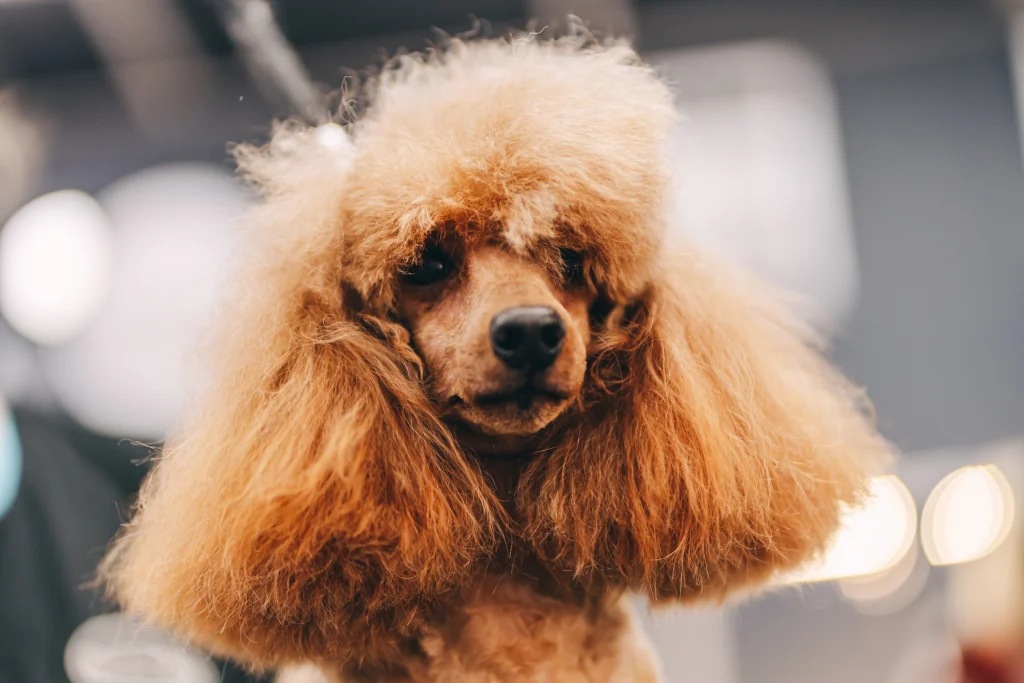
For eye cleaning, use a damp cloth to wipe away any discharge around the eyes.
Regular checks and cleaning help prevent bacteria buildup and infections in the eyes and ears.
Regular brushing of a poodle’s teeth helps prevent dental diseases. Use a dog-safe toothbrush and toothpaste to clean their teeth at least three times a week.
Focus on removing plaque and tartar, which can lead to infections and other health issues.
Establishing a routine for teeth brushing not only helps maintain oral health but can also detect potential problems early.
Addressing Grooming Challenges
Poodle grooming requires diligence and a solid understanding of how to manage common problems like matting, sensitive areas, and behavioral resistance.
Providing adequate care and attention can make the grooming process smoother and more enjoyable for both the owner and the pet.
Mats and tangles are frequent issues in poodles due to their curly coat. Consistent brushing is essential to prevent matting.
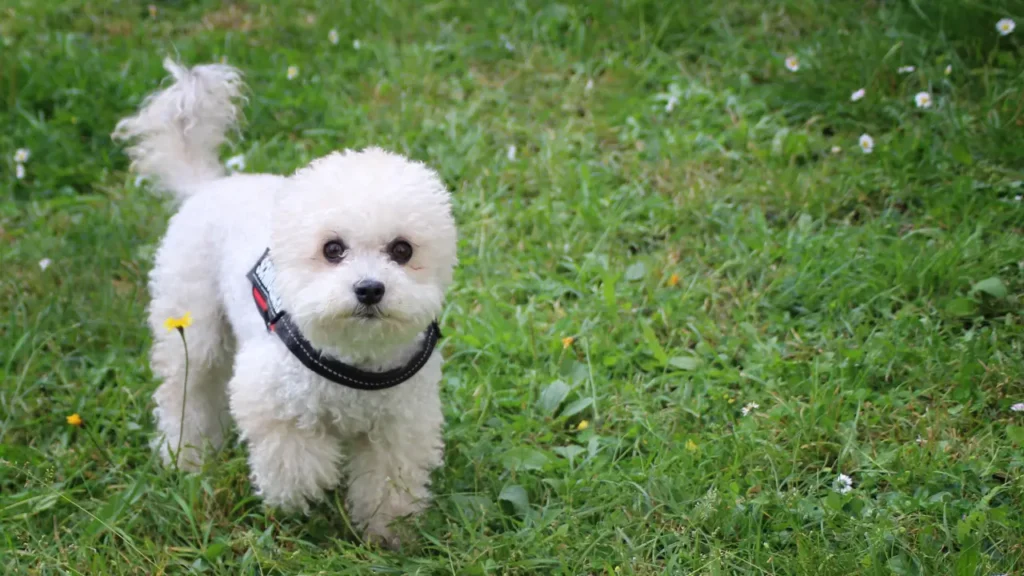
Use a slicker brush and a wide-toothed comb to remove tangles gently. Regular trimming, especially in high-friction areas like the underarms, tail, and ears, helps minimize mats.
Bathing with a quality dog shampoo can also prevent tangles. Products like detangling sprays can ease the process.
Certain areas of poodles are particularly sensitive, requiring extra care. The skin around the ears, face, and feet can be delicate.
Use gentle, hypoallergenic products to avoid irritation. When clipping nails, be cautious not to cut them too short, which can cause pain and bleeding.
For sensitive skin, select vet-recommended shampoos and conditioners. Regular checks for infections or allergies help ensure overall health.

Some poodles may resist grooming, especially puppies or nervous dogs. Building a positive association with grooming is crucial.
Start grooming sessions early in the dog’s age to establish routine and comfort. Patience and training play vital roles.
Use treats and praise to reinforce good behavior. Gradually increasing the grooming duration can help.
In extreme cases, seeking advice from a professional groomer or a vet may be necessary.
Special Considerations for Poodle Grooming
Poodle grooming involves unique challenges depending on the size of the poodle, seasonal changes, and ensuring health and safety.
Knowing how to adapt to these variables can make the grooming process more effective and comfortable for your poodle.
Poodles come in three main sizes: standard, miniature, and toy. Each size requires varied grooming techniques.
Standard poodles have more fur and need more frequent grooming than smaller poodles. Their larger size means more surface area to shave and more fur to trim and brush.

Miniature and toy poodles, being smaller, require more delicate care. Their fur can mat more easily, so daily brushing is key.
They also benefit from more gentle handling due to their size, especially around their legs and faces, where their skin can be more sensitive.
Use specific tools suited for each size. For standard poodles, larger clippers and brushes may be needed, while smaller brushes and scissors work better for miniature and toy poodles.
Seasonal changes can impact grooming routines. During colder months, poodles may need slightly longer fur for insulation.
However, during warmer months, trimming their coat shorter may provide comfort and prevent overheating.
Pay attention to temperature changes and adjust the grooming schedule accordingly.
FAQs About Poodle Grooming
1. How often should I groom my poodle?
Poodles should be groomed every 4-6 weeks, but daily brushing is necessary to prevent matting and tangling. Regular maintenance tasks like nail clipping, ear cleaning, and teeth brushing should be done weekly.
2. Can I groom my poodle at home?
Yes, grooming your poodle at home is possible with the right tools and knowledge. However, some owners prefer professional grooming services for more detailed cuts. Regular brushing and nail care can easily be handled at home.
3. What’s the best way to prevent matting in my poodle’s coat?
Frequent brushing with a slicker brush and comb is the best way to prevent matting. Pay extra attention to high-friction areas like behind the ears, under the legs, and around the collar. Regular baths with a detangling conditioner can also help.
4. How do I keep my poodle’s coat shiny and healthy?
To keep your poodle’s coat shiny and healthy, use a gentle dog shampoo and conditioner. Regular brushing helps distribute natural oils, preventing dryness and promoting a glossy coat. Don’t over-bathe, as it can strip essential oils.
5. Should I trim my poodle’s nails myself?
Yes, trimming your poodle’s nails is an essential part of grooming. Use dog-specific nail clippers and trim the nails every 2-3 weeks. Be cautious to avoid cutting too short, as this can cause bleeding. If unsure, consider asking a groomer or vet to demonstrate.
6. How do I clean my poodle’s ears?
Poodles have floppy ears that can trap moisture and bacteria. Clean their ears weekly using a cotton ball and a vet-recommended ear cleaner. Be gentle and avoid inserting anything deep into the ear canal to prevent injury.
7. Can I use human shampoo on my poodle?
No, human shampoo is not recommended for dogs, as it can irritate their skin. Always use a dog-specific shampoo formulated for its pH balance.
Final Words
Grooming your poodle is an essential part of maintaining their health, comfort, and appearance. While it requires time, patience, and the right tools, the rewards are well worth it.
Regular grooming not only ensures your poodle looks their best but also contributes to their overall well-being by preventing skin issues, matting, and other potential health problems.
Whether you choose to groom your poodle at home or take them to a professional groomer, staying on top of grooming tasks will make both you and your pet happier.
With a little practice, you’ll find a grooming routine that works for both you and your poodle, keeping them looking great and feeling their best.

